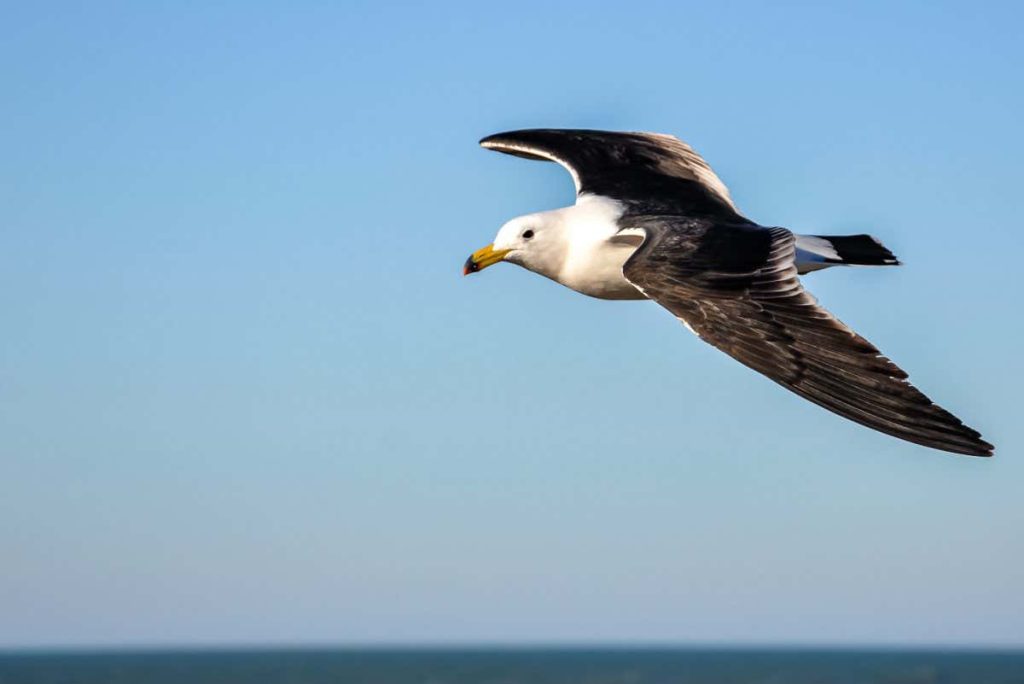Olrog’s gull (Larus atlanticus) has dark wings
Jacinto Escaray/Shutterstock
The dark colours on the top of the short, wide wings of some seagulls help change the temperature of the surrounding air, which may allow the birds to glide efficiently without compromising their agility.
Birds tend to have either relatively long, thin wings that support long-haul soaring, or shorter, wider wings that permit more energy efficient movements like turning and taking off. But some gulls have developed wings that can do both by absorbing heat from the air, says Madeleine Goumas at the University of Exeter, UK.
“Gulls are always flitting about and taking off, and if you’ve got these long wings that are actually adapted for gliding and not lifting your body, it’s going to be quite difficult to get yourself off the ground,” she says. “Once they’re in the air and they’re foraging, then that’s when this dark pigment seems to come into play.”
Advertisment
In 2017, scientists discovered that the black, upper surface of albatross wings is about 10°C warmer than the white surface underneath, and this reduces the density of the air above them. As a result, the viscosity of the air is reduced – translating into lowered drag and extra lift for more efficient gliding. After reading about this work in New Scientist, Goumas wondered if there might be a similar phenomenon in gulls.
So, she investigated the colours, bodies and wing shapes of 50 species of gull by measuring wingspan compared with wing width, known as the aspect ratio, and body mass compared with wing size, known as the wing loading. Then she evaluated how those ratios corresponded with colouring on the back and upper surface of the wings, called the mantle, and on the wing tips.
Goumas found that greater wing loading was associated with darker shades of grey on the mantle and with the proportion of black markings on the wing tips. More specifically, species with larger bodies and smaller wings, like the great black-backed gull (Larus marinus) and Olrog’s gull (Larus atlanticus), tended to have darker mantles and wing tips, whereas the colouring was lighter in birds with smaller bodies and wider wings, like the ivory gull (Pagophila eburnea), which is completely white.
The findings initially appeared to contradict those of another recent study, in which darker wings were associated with being longer and thinner, says Goumas. But she soon realised that, while seabirds like albatrosses – which soar very long distances over the ocean – use both colour and wing shape to maximise their glide, gulls use colour as a compensation for their wing and body shapes.
“Gulls are not like albatrosses and lots of other sea birds, because they spend a lot of time on land and are quite sedentary, and they take off a lot to go forage for a while,” she says. “So, when I thought about it more, it made sense.”
The findings could eventually inspire engineering designs for more fuel-efficient aircraft, says Goumas.
Sign up to Wild Wild Life, a free monthly newsletter celebrating the diversity and science of animals, plants and Earth’s other weird and wonderful inhabitants
Topics:

